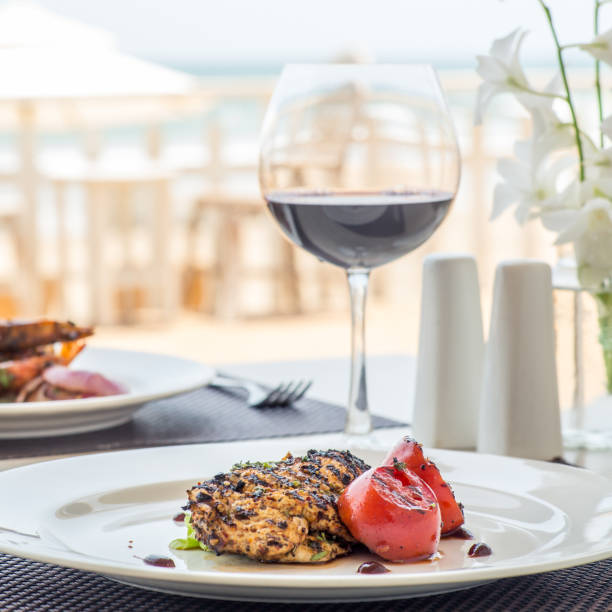They are motivated to endure the 2023 harvest.
The 2023 Ukrainian harvest will reflect the winemakers’ determination. Vintners have shown remarkable resilience in the face of conflict. They diligently maintain vineyards, produce wines, and export their products to all corners of the world. Despite unique challenges, winemakers remain optimistic.
According to the Website Wines of Ukraine: “Six wine areas have been approved officially in Ukraine.” Our legislation is outdated, as it dates back to Soviet times. It does not reflect the realities of today. Wines of Ukraine, aka the Association of Craft Winemakers of Ukraine, is working actively to expand winemaking to all of Ukraine. Many of the new wineries that have been established in the past five years are in cooler climates.
Svitlana Tsybak, CEO of Beykush Winery, reflected on a challenging 18 months, ‘Beykush is a family-owned winery that spans just 13 hectares, it’s located two kilometres from the occupied area. When full-scale war erupted last year, we faced uncertainty about our winemaking prospects. In July, we decided to bottle wines initially prepared before the war’s outbreak. We also dedicated ourselves to caring for the vineyards. Last September yielded high-quality grapes due to dry, hot weather, with no issues in the vineyard. This year could be a mixed bag – I hear reports of unfavourable weather conditions from Zakarpattia (near the Hungarian border). However, due to last year’s success, we expect to increase our production by 20% this year, thanks to two additional hectares maturing, despite the rockets above us.’
Tania Olevska of Friends Wine Travel added that ‘Winemakers were forced to continue cultivating vineyards and practicing their craft. It’s important to remain engaged emotionally during wartime. Otherwise, despair will take hold. We enjoyed a bumper harvest last year despite the war. This year looks promising as well.
The Plachkov Family founded Kolonist Winery in Bessarabia, which is a great example of resilience and growth. It began by producing 30,000 bottles per year but has now expanded to 350,000 and boasts 63ha vineyards. The portfolio includes classic aged reds and whites, as well as semi-dry, sparkling, and sweet styles. The winery’s Odesa Black and Sukholymanske White highlight Ukraine’s native array. The winery continued to operate even during the early conflict when alcohol was restricted and night lights were prohibited. The winery opened its doors to families in the occupied region and offered humanitarian aid. Hryhoriy Plachkov, the co-owner, is a serving military officer.
In the Zakarpattia area, former tennis player Sergiy Stakhovsky owns Stakhovsky Wines. As he returned to Kyiv, Stakhovsky spoke with Decanter.com about the two previous vintages. ‘We have a total of 22.5 hectares and produce 10,000 cases per year. The 2022 vintage had a very charismatic and powerful taste, but we were without electricity for two weeks due to missile attacks. Weather instability in our region affected the 2023 harvest, but we will not know the full results until we begin harvesting in the last week of September. The Russian invasion destroyed wineries and made it hard for them to survive. But motivated vine growers, winemakers, and others persevered.
Kolonist Winery. Credit: Kolonist Winery
A brief overview of Ukrainian winemaking
It is important to remember that the war has had a devastating impact on the wine industry in some regions. Producers said that many occupied areas have been severely affected, resulting in the loss of wineries, including those in Kherson.
Tsybak predicted that it would take a minimum of ten years to restore wine production in some regions. He is the co-founder of Wines of Ukraine – a key organization that champions domestic producers and was born from the collaborative spirit at the start of the conflict. Ukraine retains around 100 wineries, down from 180 prior to the start of the war. The majority are still operational.
Another challenge facing Ukrainian winemakers is the bureaucracy and complexity of laws. Ukraine’s wine sector has experienced a remarkable revival over the past two decades. Between 2016 and 2018, significant legislative improvements were made in order to support small winemakers.
Tsybak noted the progress: “Since 2018, our focus has been on simplifying the legislation, including the removal of the requirement for an excise tax stamp on bottles.”
In 2021, the still wine excise was removed. This marked a major milestone. In recent years, the law 9030 has introduced important provisions, such as simplified licensing, removal of administrative penalties and reporting, support for winemakers, and a provision allowing minor producers to buy grapes at a reduced licence fee.
Stakhovsky says that the Ukrainian wine industry has been on the rise since 2016, when the president signed a law allowing small “craft” producers to make wine using their own vines, without having to pay license fees of around PS16,000′
He explained that these legislative amendments had boosted the number of boutique wineries across the country.
The path to success
Since the beginning of the conflict, the international wine community has rallied to support Ukrainian winemakers.
In recent years, many nations have re-evaluated their views about Ukraine. Now, they understand Ukraine’s true essence. Importers expressed their desire for our wines to be imported, which resulted in repeated orders. Ukrainian wines are now available in new markets, and foreign markets have also discovered Ukrainian wine. Our Estonian partners, for example, started out with a single pallet to help, but today, their orders are up to five or six pallets a month.
She said that Ukraine’s wine sector is working hard to increase its global reach, and to enhance its presence. This includes introducing Ukrainian terroirs to international audiences.
Ukrainian winemakers are preparing for an exciting future while navigating the conflict. Plans for 2024 are optimistic despite uncertainties.
Kostiantyn Tintulov shared his vision: “In 2024, our goal is to increase domestic and export sales, explore new markets and launch new wines. We also plan to contribute to the restoration of our country.”
Wines from Ukraine
Vladimir Palariev was equally optimistic in his interview with decanter.com. He said, “In 2024, our plan is to introduce a line of unique wines showcasing indigenous grape varieties.” We expect robust sales in the UK and EU.
The creativity and resilience of Ukrainian winemakers in these difficult times points to a brighter future for the country’s wine industry. Wines Of Ukraine will introduce 13 wineries to UK Trade at 67 Pall Mall, London on the 9th October. The company also plans to take part in Prowein & the London Wine Fair to build on their previous success.




